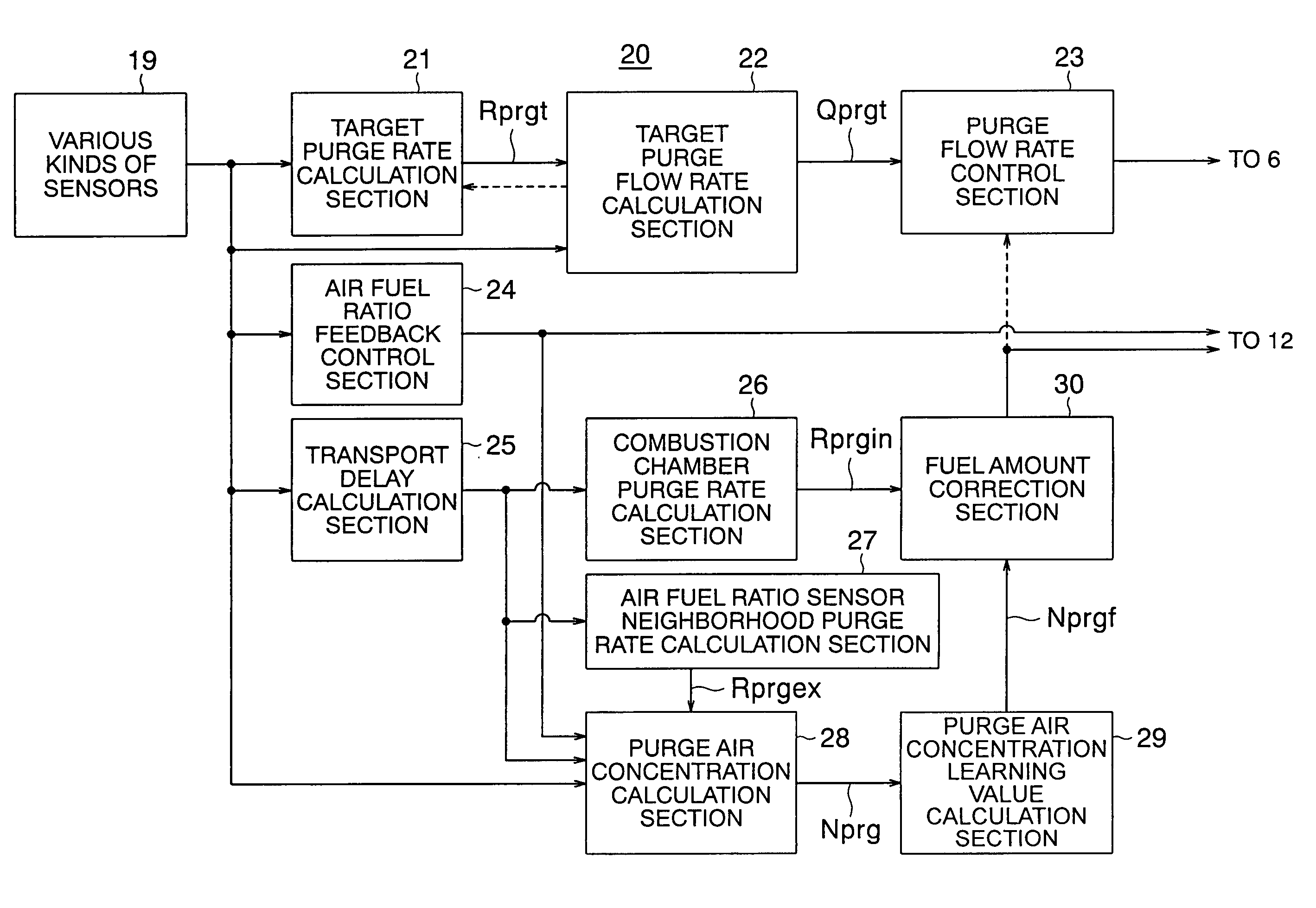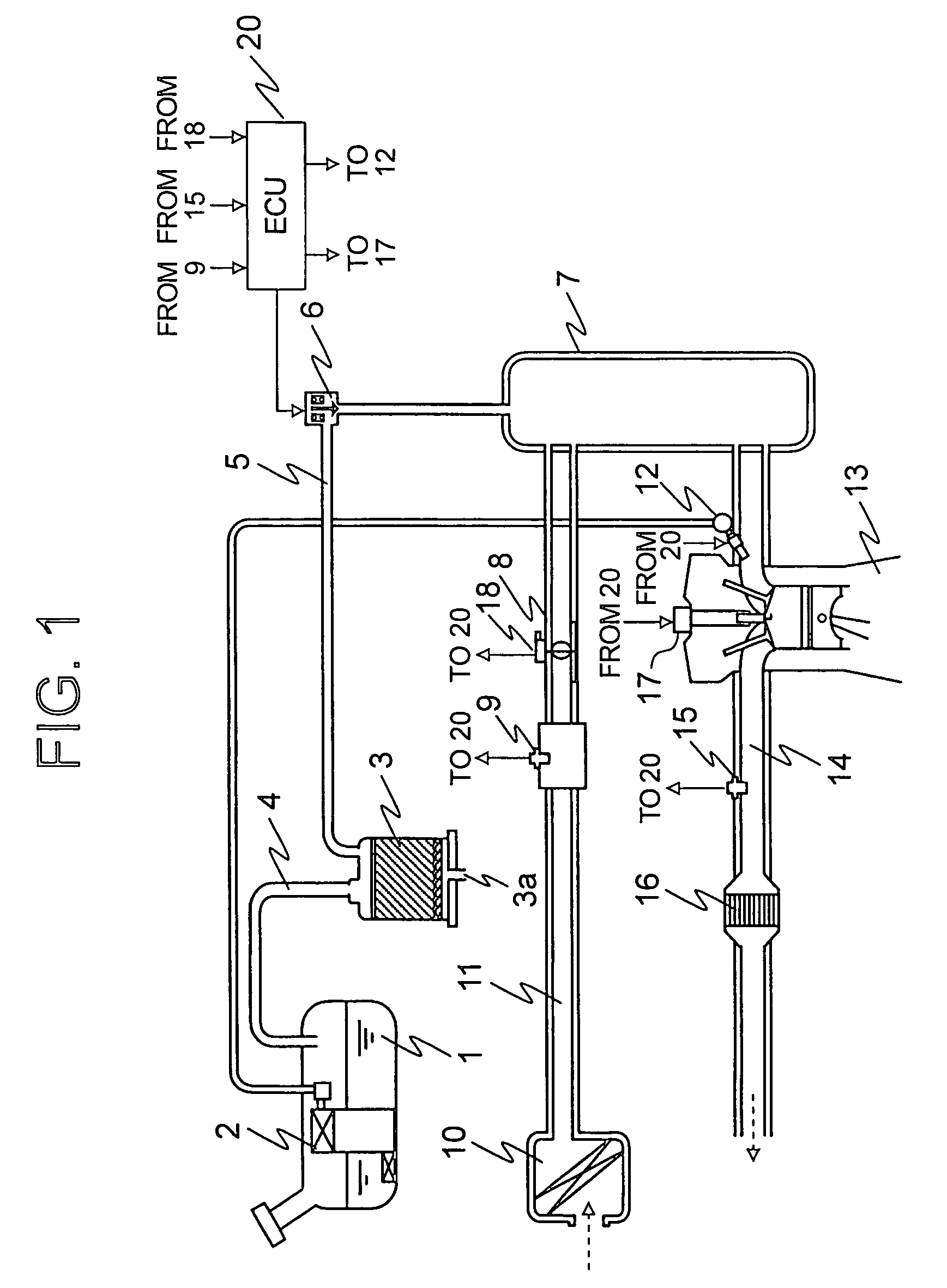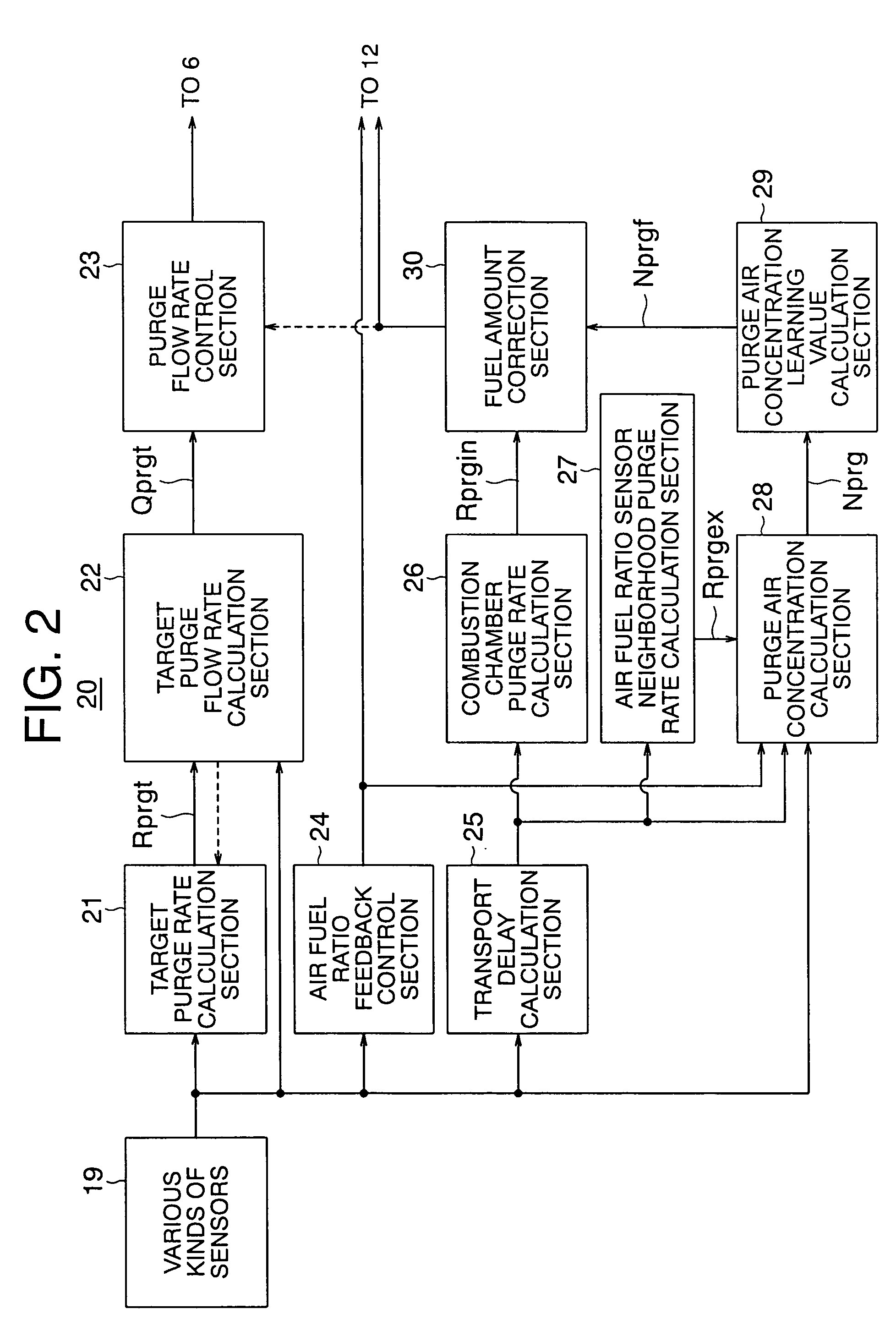Control apparatus for an internal combustion engine
a control apparatus and internal combustion engine technology, applied in the direction of electric control, combustion-air/fuel-air treatment, machines/engines, etc., can solve the problems of increasing calibration man-hours, exhaust gas deterioration, and inability to maintain the air fuel ratio, so as to reduce calibration man-hours and the memory capacity necessary
- Summary
- Abstract
- Description
- Claims
- Application Information
AI Technical Summary
Benefits of technology
Problems solved by technology
Method used
Image
Examples
embodiment 1
[0033]FIG. 1 is a construction view that conceptually shows a control apparatus for an internal combustion engine with an evaporated fuel treatment device according to a first embodiment of the present invention.
[0034]In FIG. 1, in a fuel tank 1 in which fuel is filled, there is arranged a fuel pump 2 that serves to supply the fuel to an injector 12 of an internal combustion engine 13. An upper portion in the fuel tank 1 is placed in communication with one end of a canister 3 through an evaporated fuel passage 4. The canister 3 has the other end thereof placed in communication with a surge tank 7 arranged in an intake system through a purge passage 5, in which a purge control valve 6 is arranged.
[0035]In an intake passage 11 of the internal combustion engine 13, there are arranged the surge tank 7, a throttle valve 8, an air flow sensor 9 and the injector 12, with an air cleaner 10 being arranged at an upstream and of the intake passage 11. A throttle opening sensor 18 for detecting...
embodiment 2
[0145]Though not particularly described in the above-mentioned first embodiment, an intake air amount decreasing correction section may be provided in the ECU 20 (see FIG. 1) for canceling out the amount of air contained in purge air.
[0146]In this case, the intake air amount decreasing correction section in the ECU 20 estimates the amount of air contained in purge air based on the purge flow rate controlled by the purge flow rate control section 23 and the purge air concentration Nprg calculated by the purge air concentration calculation section 28, and corrects the amount of intake air flowing from the throttle valve 8 or an ISC valve into the intake system by decreasing it by the amount of air that is contained in the purge air.
[0147]Specifically, a control apparatus for an internal combustion engine according to a second embodiment of the present invention includes, in addition to the functions of the above-mentioned first embodiment, an air amount calculation function to estimat...
embodiment 3
[0154]Though not particularly described in the above-mentioned first and second embodiments, a sonic nozzle (e.g., a Laval nozzle or also called a contraction and expansion tube) may be arranged in an internal passage of the purge control valve 6 used in the evaporated fuel treatment device, as shown in FIG. 10. FIG. 10 is a cross sectional view that shows the internal passage in the control valve 6 according to a third embodiment of the present invention, in which the construction unillustrated herein is similar to the corresponding one in the above-mentioned embodiments.
[0155]In FIG. 10, the purge control valve 6 has a structure using the sonic nozzle, with an orifice or restricted portion 62 being formed in a part of an internal passage 61. Here, the sonic nozzle will be described in some detail. By the provision of the restricted portion 62 in a part of the internal passage 61 for purge air, as shown in FIG. 10, when the internal pressure of the surge tank 7 (i.e., pressure in t...
PUM
 Login to View More
Login to View More Abstract
Description
Claims
Application Information
 Login to View More
Login to View More - R&D
- Intellectual Property
- Life Sciences
- Materials
- Tech Scout
- Unparalleled Data Quality
- Higher Quality Content
- 60% Fewer Hallucinations
Browse by: Latest US Patents, China's latest patents, Technical Efficacy Thesaurus, Application Domain, Technology Topic, Popular Technical Reports.
© 2025 PatSnap. All rights reserved.Legal|Privacy policy|Modern Slavery Act Transparency Statement|Sitemap|About US| Contact US: help@patsnap.com



